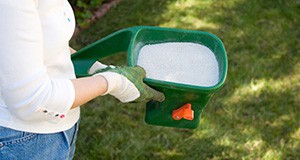Widespread urbanization in the United States has increased the number of lawns. A healthy lawn provides many benefits, including urban heat dissipation, water quality protection, erosion control, carbon sequestration, community safety, aesthetics, and property value growth. Many homeowners maintain their healthy lawns by applying fertilizers throughout the growing season, but excess fertilizer runoff and leaching have received much attention recently because of waterway pollution and algae blooms, leading many states to place restrictions on what chemicals can be used in lawn fertilizers.
Consumers’ increased environmental awareness creates a niche opportunity for the fertilizer industry to promote environmentally friendly lawn fertilizers, but in order to effectively exploit it, industry stakeholders must understand consumer purchasing behavior before expending labor, time, and money creating products for sale. The following 3-page report written by Hayk Khachatryan, Alicia Rihn, and Michael Dukes and published by the Food and Resource Economics Department covers research methodology and the existing brand awareness and selection of consumers in the lawn fertilizer industry. It also discusses homeowners’ preferences for certain fertilizer attributes. Consumer awareness, selection, and attribute preferences indicate existing behavior, and understanding existing behavior assists in the development of effective marketing programs, promotional strategies, and policies.
http://edis.ifas.ufl.edu/fe990



